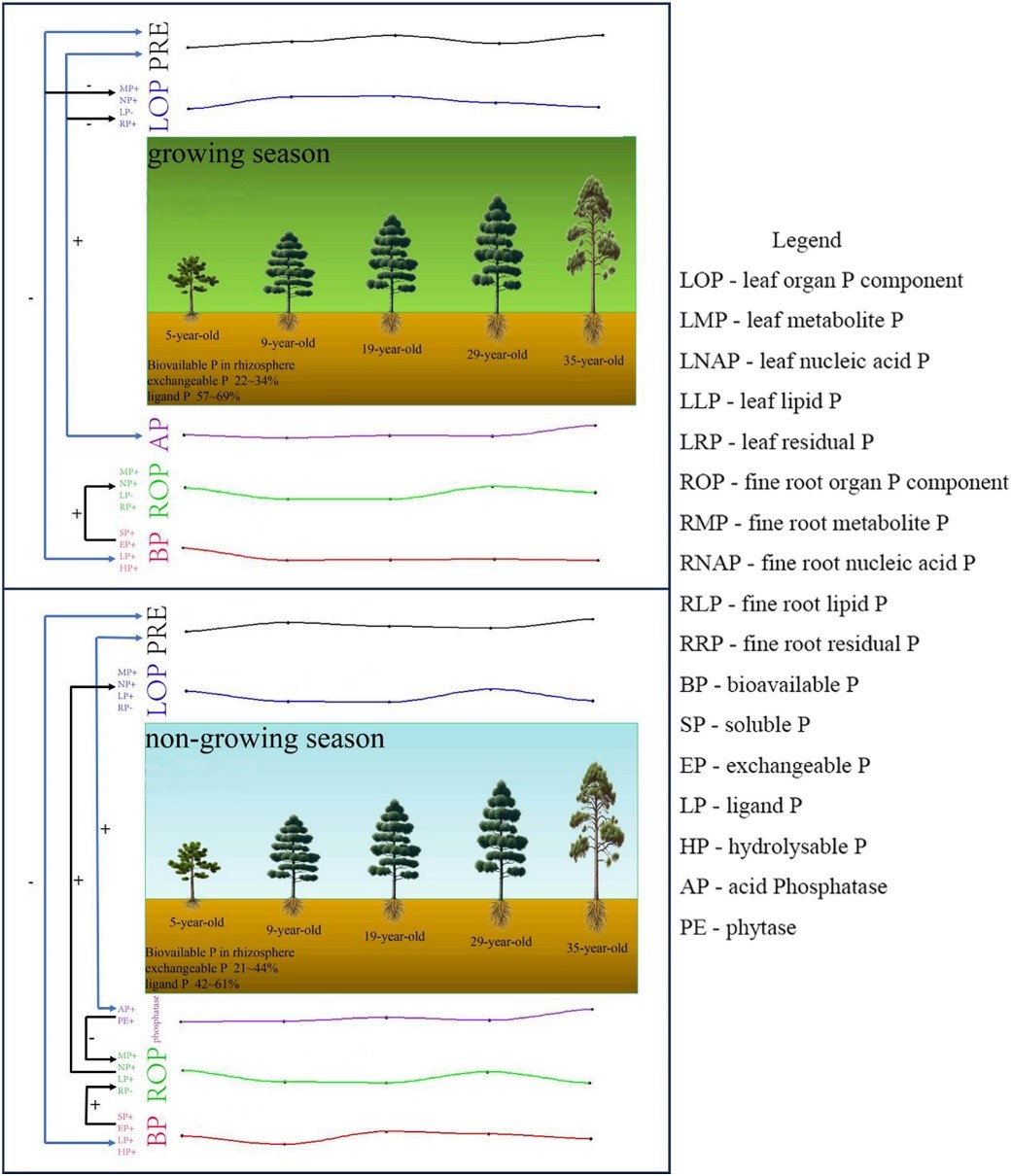Phosphorus Cycle Process in the Subtropical Masson Pine Plantation with Increasing Forest Age
Published 09 October, 2024
Phosphorus (P) is an important nutrient element in plant photosynthesis. However, the adsorption of mineral P via leaching and erosion leads to a decrease in P availability and consequently P deficiency.
In a study published in the journal Forest Ecosystems, a team of researchers from China elucidated a mechanism for phosphorus cycling in subtropical forests. They found that as stand age increases, bioavailable phosphorus in Pinus massoniana plantations gets absorbed by roots under the influence of soil phosphatases. This phosphorus is then allocated to roots and leaves in various organ phosphorus component forms, with this relationship exhibiting seasonal variations.
"The phosphorus cycle within the above-ground and below-ground environments of subtropical forests variesacross different stands, ages and seasons," shares corresponding author Xiaogai Ge from the Institute of Forestry Engineering, Chinese Academy of Forestry. “As stand age increases, Pinus massoniana consistently absorbs bioavailable phosphorus from the soil, resulting in a reduction in soil phosphorus availability within Pinus massoniana plantations.”
The absorbed phosphorus is then distributed to various organs in four distinct forms: metabolic phosphorus, nucleic acid phosphorus, lipid phosphorus, and residual phosphorus.
“This distribution is influenced by phosphorus resorption,” adds Ge. “Phosphorus in these organs eventually returns to the soil through litterfall, thereby mitigating the decline in soil phosphorus availability due to the activity of soil phosphatases.”
The research team also observed that the proportion of metabolic P in leaves initially increased but subsequently decreased with the stand age of Pinus massoniana throughout the growing season, resulting in a metabolic P proportion of 34–68% in litter. During the non-growing season, the primary alteration in the P components of Pinus massoniana fine roots was a shift from metabolic P to residual P.
“Compared to the growing season, soil ligand P fractions decreased by 7–22% and exchangeable P fractions increased by 0–16% during the non-growing season,” says Ge. “The organ P components tended to decrease with increasing stand age, primarily due to the gradual reduction in soil-bioavailable P, a trend that was mitigated by litter input.”
The production of dissolved P by soil phosphatases would somewhat limit the reduction in soil-bioavailable P caused by leaf P resorption. The variations in leaf organ P components between the growing and non-growing seasons are attributed to the allocation of P by the Pinus massoniana.
The primary significance of the team’s findings lies in their potential to offer a theoretical foundation for the management practices of Pinus massoniana plantations, enhancing productivity across various stand ages in subtropical plantations.

Contact author details: Xiaogai Ge, Research Institute of Subtropical Forestry, Chinese Academy of Forestry, Hangzhou, Zhejiang, 311400, China
Funder: This study was supported by the Fundamental Research Funds for the Central Non–profit Research Institution (CAFYBB2021QD002-2 and CAFYBB2020ZE001), the National Key Research and Development Program of China (2023YFD2200404-02), and the Qianjiangyuan National Forest Ecological Research Station.
Conflict of interest: The authors declare that they have no known competing financial interests or personal relationships that could have appeared to influence the work reported in this paper.
See the article: Xue, X. P., et al., Effects of phosphorus resorption on bioactive phosphorus of different-aged Pinus massoniana plantations. Forest Ecosystems, 11,10024. https://doi.org/10.1016/j.fecs.2024.100241